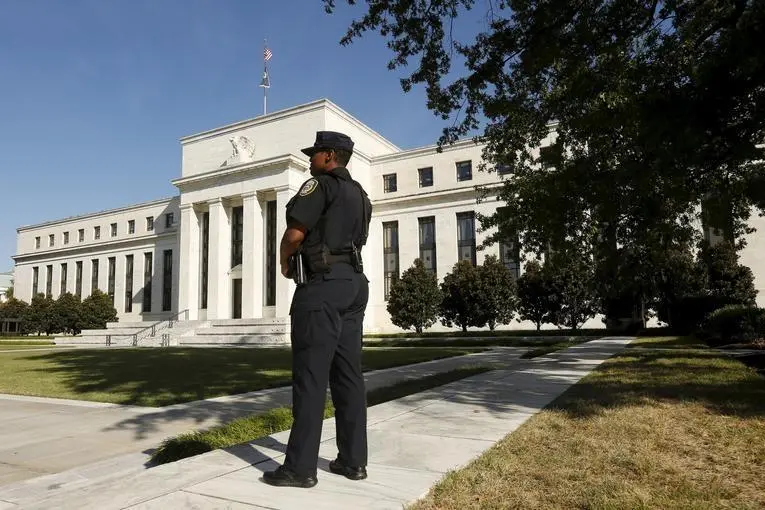PHOTO
An indicator of credit risk in the U.S. banking system may be showing signs of stress, as the Federal Reserve’s aggressive rate hike path ratchets up expectations of economic pain.
The so-called FRA-OIS spread , which measures the gap between the U.S. three-month forward rate agreement and the overnight index swap rate, increased to 29.50 basis points on Thursday, its widest since May 23, according to data from Refinitiv. The measure was at -11.66 bps earlier in the week.
Widely viewed as a proxy for banking sector risk, a higher spread reflects rising interbank lending risk.
"The recent spike in the spread between forward rate agreement and overnight index swap rate is concerning," said Jordan Jackson, a global market strategist at J.P. Morgan Asset Management. "As the Fed turns more hawkish, there is a rise in recession concerns and that is increasing the underlying credit risk.”
The Fed raised rates by 75 basis points on Wednesday, its biggest increase since 1994, and expectations of more drastic tightening ahead have shaken markets and increased worries over a potential recession.
The central bank this month also began allowing bonds to mature off its more than $8 trillion balance sheet without replacing them, a process called quantitative tightening that Jackson said can potentially sap liquidity in the financial system.
That echoes concerns of some other investors, who have worried that market conditions could worsen as the world’s largest holder of U.S. government debt reduces its presence in the market.
"Now that quantitative tightening has officially started, we have seen reserve drainage pretty persistent over the last several months," Jackson said, adding that he expects the FRA-OIS spread to widen even further.
Wall Street is also seeing a greater risk of default by major banks.
Spreads on credit default swaps (CDS) of JP Morgan, Goldman Sachs, Morgan Stanley, Citigroup, Wells Fargo and Bank of America were approaching fresh two-year highs on Thursday.
(Reporting by Mehnaz Yasmin in Bengaluru; Editing by Ira Iosebashvili and Lisa Shumaker)












